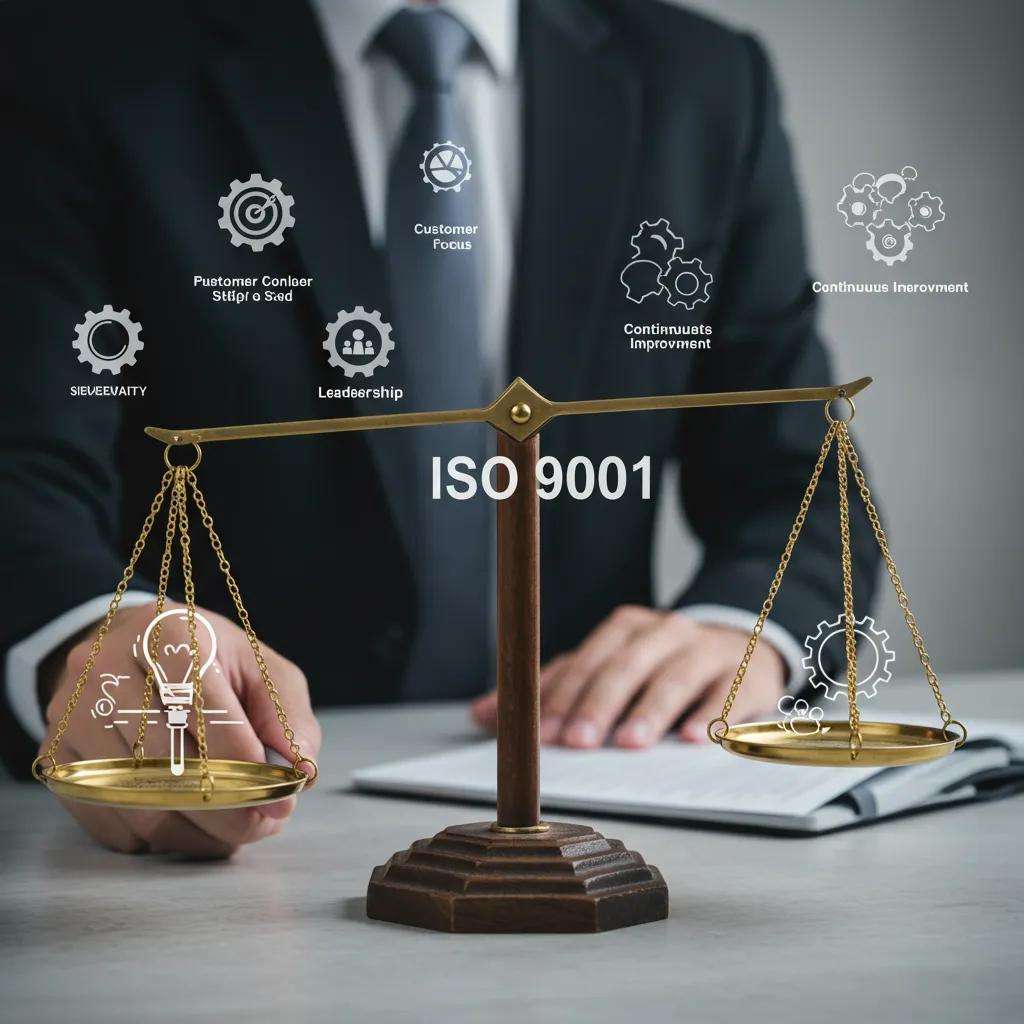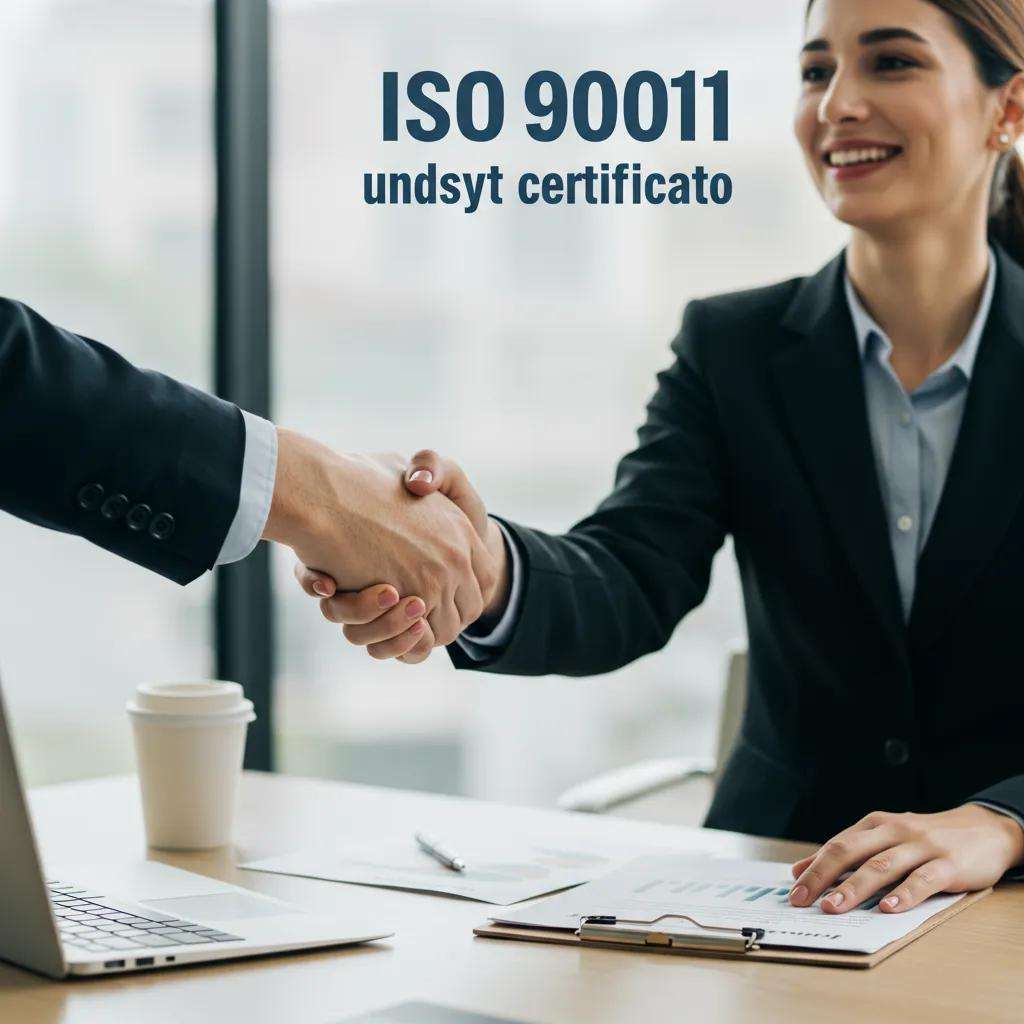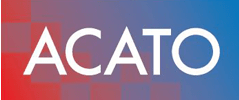How ISO Compliance Enhances Trust in Customer Relationships

How ISO 9001 Compliance Builds Trust and Meets Client Requirements
ISO 9001 defines a structured Quality Management System (QMS) that converts management intent into repeatable processes, clear controls, and measurable outcomes that customers can rely on. This article explains how ISO 9001 compliance operates as a mechanism — through documented processes, audits, and continuous improvement — to strengthen customer trust and satisfy procurement criteria set by major clients. Readers will learn what ISO 9001 requires, which clauses map to customer-facing benefits, why accredited certification matters for tenders, and how businesses can implement the standard to unlock market access and long-term client loyalty. The article covers the QMS basics, trust-building mechanisms, procurement rationales, real-world benefits and statistics, an implementation roadmap, and operational excellence tactics including transparency through audits. Throughout, the guidance integrates practical EAV mappings and actionable checklists that connect ISO 9001 clauses to procurement language, helping organizations translate compliance into credible trust signals for customers and buyers.
What Is ISO 9001 and How Does It Establish a Quality Management System?
ISO 9001 is an international quality management standard that defines requirements for a Quality Management System to ensure consistent delivery of products and services, reduce defects, and meet customer and regulatory requirements. The standard works by specifying processes, documented procedures, roles, and performance metrics that organizations must implement, control, and continually improve, producing outcomes customers can verify. For customers, ISO 9001 establishes predictable performance, traceable audit trails, and systematic corrective actions that reduce supplier risk and elevate confidence. The next sections map core clauses to tangible customer outcomes and explain the principles that underpin consistent quality and global recognition.
| Clause | QMS Attribute | Customer Outcome |
|---|---|---|
| Clause 4 (Context of the organization) | Requirement alignment and stakeholder focus | Suppliers demonstrate awareness of customer needs, reducing mismatch in specifications |
| Clause 6 (Planning) | Risk-based planning and objectives | Predictable delivery schedules and reduced disruption risk for clients |
| Clause 8 (Operations) | Process control and documented procedures | Consistent product/service quality with fewer defects and returns |
These clause mappings show how ISO 9001 turns management intent into measurable customer benefits that procurement teams can evaluate. Understanding clause-level impacts helps procurement language connect directly to supplier controls and expected outcomes.
What Are the Core Principles of ISO 9001 That Ensure Consistent Quality?

ISO 9001 rests on several core principles—customer focus, leadership, engagement of people, process approach, improvement, evidence-based decision making, and relationship management—that together ensure consistent quality and customer orientation. Customer focus drives requirements capture and satisfaction metrics, which directly align supplier performance with client expectations and reduce rework. Leadership ensures that objectives cascade from management to operational teams, creating accountability and visible commitment that clients can assess during supplier reviews. Engagement of people and a process approach embed operational discipline, while evidence-based decisions and continuous improvement provide the mechanisms to detect, correct, and prevent issues that would otherwise erode customer trust.
These principles interlink: a process approach makes improvement measurable, and evidence-based decisions ensure adjustments are data-driven rather than reactive. This linkage transitions naturally into how a QMS improves operational efficiency by standardizing workflows and reducing variability.
How Does a Quality Management System Improve Operational Efficiency?
A QMS improves operational efficiency by standardizing processes, reducing waste, and establishing performance metrics that enable rapid detection and correction of issues. Standard operating procedures and process maps reduce variability, cutting defects and decreasing cycle times so customers receive consistent quality and on-time deliveries. Key performance indicators and internal audits provide the data to drive corrective actions and optimization, which lowers cost-to-serve and increases reliability for clients. These efficiency gains translate into measurable customer benefits such as fewer complaints, shorter lead times, and improved service predictability.
Improved efficiency feeds directly into global recognition for quality, which is the next critical advantage for suppliers seeking broader market access and procurement credibility.
Why Is ISO 9001 Recognized Globally as a Benchmark for Quality?
ISO 9001 is recognized globally because it provides a harmonized set of requirements that are applicable across industries, enabling buyers and regulators to use a common framework to assess supplier reliability. Third-party audits and accredited certification add credibility by verifying that an organization’s QMS meets internationally accepted criteria, which simplifies due diligence for clients. Global acceptance means procurement teams can compare suppliers on consistent terms, reducing ambiguity in tender evaluations and enabling cross-border contracts. This global recognition supports the use of ISO 9001 as a procurement filter and a baseline for contract terms and service-level expectations.
Recognition by accreditation bodies creates another layer of trust, which leads into the mechanisms by which certification enhances customer trust and business credibility.
How Does ISO 9001 Certification Enhance Customer Trust and Business Credibility?

ISO 9001 certification enhances trust by providing independent, third-party validation that a supplier’s QMS meets international standards, demonstrating consistent quality, transparency, and accountability to customers. Certification signals that processes are documented, internal audits are performed, and management reviews address risks and opportunities, all of which reduce uncertainty for buyers. Certified organizations can share audit evidence and improvement records that reassure clients during supplier selection and ongoing relationship reviews.
ISO 9001 certification builds trust through these mechanisms:
- Third-party validation: Independent audits confirm QMS conformity and reduce buyer verification burden.
- Consistent quality controls: Documented processes and operational controls lower defect rates and increase predictability.
- Transparency and traceability: Audit trails, records, and corrective action histories enable client due diligence.
These mechanisms collectively make certification a powerful signal in procurement decisions, and they lead directly to increased customer loyalty and satisfaction, which we explore next.
In What Ways Does ISO 9001 Build Enhanced Credibility and Reputation?
ISO 9001 builds credibility by enabling organizations to demonstrate systematic quality controls, documented processes, and verified performance claims that procurement teams and clients can evaluate objectively. Certification allows suppliers to present verifiable evidence—such as audit summaries and nonconformity closure records—that supports reputation claims and reduces buyer skepticism. Publicly maintained certificates and audit scopes help marketing and proposal messaging, providing concise trust statements for supplier profiles and bids. These tangible reputation signals simplify supplier prequalification and position certified organizations as lower-risk partners in competitive procurement contexts.
How Does ISO Compliance Lead to Greater Customer Loyalty and Satisfaction?
ISO compliance leads to greater loyalty by ensuring that the customer experience becomes more predictable, measurable, and improvable through structured feedback loops and corrective actions. When suppliers systematically collect customer feedback, analyze root causes of issues, and implement corrective measures, clients experience fewer repeated problems and see continuous service improvement. Predictability in quality and delivery fosters trust accumulation, which encourages longer contracts and referral business. The continuous improvement cycle also creates evidence that suppliers invest in customer outcomes, strengthening satisfaction and retention.
Research indicates that ISO 9001 certification positively impacts both employee and customer-related organizational performance, with certification incentives playing a mediating role in this relationship.
ISO 9001: Enhancing Customer and Employee Performance
According to ISO 9000:2015, “the primary focus of quality management is to meet customer requirements and to strive to exceed customer expectations,” where “a customer can be internal or external to the organization.” Internal customers refer to an organization’s employees, while external customers are the purchasers of a company’s products and services. Prior research has examined the impact of ISO 9001 on organizational performance, without a specific focus on performance related to internal and external customers. The findings indicate that certification to ISO 9001 for a quality management system (QMS) enhances both employee- and customer-related organizational performance, with certification incentives found to mediate this relationship.
Measuring the impact of ISO 9001 on employee and customer related company performance, V Milovanović, 2023
Why Is Transparency and Accountability Important for Client Confidence?
Transparency and accountability matter because procurement teams need verifiable evidence that suppliers manage quality risks effectively and respond to issues promptly. Audit records, corrective action logs, and management review minutes offer clients concrete proof of governance and responsiveness, shortening procurement approval cycles and reducing the need for extensive site inspections. Accountability demonstrates that problems are owned and corrected, which reduces client exposure to project disruption and reputational harm. Clear documentation and traceability therefore function as operational trust signals that complement third-party certification.
This operational transparency aligns closely with procurement requirements, which is why many major clients specify ISO 9001 in their supplier standards.
Why Do Major Clients Require ISO 9001 Certification as a Prerequisite?
Major clients often require ISO 9001 certification to mitigate supplier risk, standardize vendor evaluation, and ensure contractual and regulatory obligations are met consistently across their supply base. Certification reduces procurement overhead by providing a documented baseline for supplier capability, enabling faster onboarding and simpler contract management. Clients in regulated industries or with large-scale supply chains especially value the auditable controls and evidence trails that certification produces. The following numbered list outlines the core procurement rationales that make ISO 9001 a frequent contractual prerequisite.
- Risk mitigation: Certification demonstrates process controls that lower the likelihood of defects and service failures.
- Supplier standardization: Certification provides a consistent evaluation benchmark across vendors and geographies.
- Regulatory and contractual compliance: Certifications help suppliers meet statutory or contractually specified quality requirements.
Mapping typical procurement language to ISO provisions helps bidders understand how to meet tender criteria, which the table below illustrates.
| Procurement Need | Attribute | ISO Provision |
|---|---|---|
| Supplier reliability | Process controls and monitoring | Clause 8 (Operations) ensures controlled production/delivery |
| Evidence of governance | Management review and documented policy | Clause 5 (Leadership) requires top management involvement |
| Traceability for compliance | Records and audit trails | Clause 7 (Support) and Clause 9 (Performance evaluation) mandate documented evidence |
This mapping clarifies how procurement clauses align with ISO 9001 requirements and why certification simplifies vendor evaluation. For organizations preparing bids, ISO 9001 certification is commonly requested by key clients and can be included as part of a supplier’s evidence package to meet tender terms.
How Does ISO 9001 Fulfill Contractual and Regulatory Client Requirements?
ISO 9001 fulfills contractual and regulatory requirements by mandating documented controls, risk assessments, and record-keeping that directly respond to common contractual clauses on quality, traceability, and corrective action. Sample RFP language asking for “evidence of a documented quality system and third-party certification” maps directly to ISO clauses requiring documented processes, internal audits, and certification audits. By aligning supplier processes with ISO requirements, organizations can demonstrate they meet regulatory reporting needs and contractual KPIs. Procurement teams therefore see certified suppliers as lower compliance risks and often prioritize them in selection. Understanding clause-to-contract mapping reduces ambiguity in bids and speeds up contract review, which supports quicker onboarding and delivery.
What Competitive Advantages Does ISO Certification Provide for Market Access?
ISO certification provides competitive advantages by enabling access to tenders that explicitly list certification as an eligibility criterion and by differentiating suppliers in crowded markets through credible, verifiable quality claims. Certified suppliers can be shortlisted for preferred supplier lists and are better positioned to win large contracts where risk transfer and compliance are critical. Certification also supports cross-border market access because ISO 9001 is internationally recognized, allowing suppliers to meet global client expectations without bespoke audits for every buyer. These advantages translate into measurable business outcomes such as higher bid success rates and expanded addressable markets. Differentiation through certification pairs well with clear messaging in proposals and supplier profiles, increasing the perceived reliability of bids submitted to major clients.
How Do Accredited Certification Bodies Influence Client Confidence?
Accredited certification bodies influence client confidence by providing an extra layer of assurance: accreditation bodies verify that certification bodies operate competently and impartially, which enhances the trustworthiness of issued certificates. Clients often prefer certificates issued by certification bodies accredited by recognized accreditation bodies such as national or international accreditation frameworks, since accreditation confirms the auditor competence and process integrity. To verify accreditation, procurement teams check the accreditation status and scope of the certification body, which reduces the risk of accepting non-accredited or questionable certificates.
The table below summarizes key verification steps procurement teams use.
| Verification Step | Characteristic Checked | Client Benefit |
|---|---|---|
| Accreditation status | Accreditation by recognized authority | Confirms auditor competence and impartiality |
| Scope of certification | Covered processes and locations | Ensures certificate applies to contracted activities |
| Audit cycle history | Frequency and findings | Demonstrates ongoing surveillance and corrective action |
Selecting accredited certification increases buyer confidence and reduces the likelihood of disputes related to quality claims. The role of accreditation therefore remains a critical trust differentiator in procurement evaluations.
What Are the Real-World Benefits of ISO 9001 for Customer Trust?
Real-world benefits of ISO 9001 for customer trust include demonstrable improvements in process consistency, reduced nonconformities, faster corrective actions, and clearer evidence for procurement and compliance reviews. Case summaries and industry statistics consistently show that organizations with mature QMSs experience fewer quality incidents and stronger client retention, because clients perceive a lower operational risk. The section below outlines typical success scenarios and highlights how forthcoming standard revisions might change client expectations, particularly around governance and digital evidence.
Which Success Stories Demonstrate ISO 9001’s Impact on Securing Key Clients?
Anonymized success stories typically involve suppliers winning large contracts after providing certification evidence that satisfied strict procurement requirements, leading to increased contract value and longer terms. One common scenario shows a supplier moving from conditional to full contract award after demonstrating a documented QMS and corrective action closing procedures, which reassured the buyer on delivery risk. These examples emphasize the causal chain: certification enables vendor prequalification, which expands bid eligibility and increases the probability of award. They are illustrative of how certification directly contributed to contract wins and enhanced client trust.
What Do Recent Industry Statistics Reveal About ISO 9001 and Customer Retention?
Recent industry analyses indicate that suppliers with certified QMSs report higher customer retention and fewer quality-related contract disputes, reflecting the relationship between consistent quality and long-term client relationships. Statistics from procurement surveys show that buyers rank third-party certification as a top trust signal when shortlisting suppliers, underlining certification’s role in decision-making. Interpreting these numbers suggests that investment in ISO 9001 can yield measurable returns in reduced churn and improved win rates in competitive tenders. Organizations should therefore consider certification not just as compliance, but as a strategic tool for customer retention and growth.
How Will the Upcoming ISO 9001:2026 Revision Affect Client Expectations?
The ISO 9001:2026 revision is expected to emphasize enhanced governance, risk management, and the integration of digital evidence and performance data into audits, which will raise client expectations for transparency and timely reporting. Clients may increasingly expect suppliers to present digital dashboards, KPI histories, and evidence of real-time risk controls during procurement evaluations and performance reviews. Early adopters who modernize document control, data collection, and evidence presentation will therefore gain a competitive edge. Practical steps for suppliers include digitizing records, tightening cyber-physical process controls, and updating management reviews to reflect risk and performance metrics that clients can verify.
Preparing for the revision aligns a supplier’s QMS with future client priorities and supports sustained trust as procurement practices evolve.
How Can Businesses Implement ISO 9001 to Strengthen Client Confidence?
Implementing ISO 9001 to strengthen client confidence requires a structured roadmap that translates requirements into operational tasks, assigns responsibilities, and delivers measurable outcomes that buyers can verify. A practical implementation approach includes a gap analysis, process documentation, implementation of controls, internal audits, management review, and certification audits. Below is a table that maps key steps to responsible parties and expected outcomes, followed by a numbered checklist that functions as an actionable roadmap for teams preparing for certification.
| Step | Responsible Party | Expected Outcome |
|---|---|---|
| Gap analysis | Quality lead and process owners | Identifies nonconformities and prioritizes corrective actions |
| Documentation & process design | Process owners with management support | Clear SOPs and controls that clients can audit |
| Internal audits & corrective action | Internal auditors | Evidence of control effectiveness and continual improvement |
Use this roadmap as the foundation for an implementation plan that produces client-facing evidence and reduces procurement friction.
Key steps to certification and typical timelines:
- Conduct a gap analysis: Assess current processes against ISO 9001 requirements and prioritize remediation; typically 2–6 weeks.
- Document processes and implement controls: Create procedures, roles, and records that reflect operational reality and client expectations; typically 4–12 weeks.
- Perform internal audits and management review: Verify implementation, close nonconformities, and set measurable objectives; typically ongoing monthly/quarterly cycles.
- Undergo certification audit: Arrange for a certification body audit and respond to findings to achieve certification; timeline depends on readiness and audit schedules.
These steps translate ISO requirements into tangible client benefits and, for organizations seeking formal accreditation support, ISO 9001 certification services can guide accreditation selection and audit preparation. Mapping tasks to responsibilities ensures deliverables clients will look for—documented controls, audit trails, and improvement records—are in place.
What Are the Key Steps to Achieve ISO 9001 Certification?
Achieving certification begins with leadership commitment and a structured gap assessment to identify missing documentation and process controls. Next, organizations document procedures, assign responsibilities, train staff, and implement monitoring metrics that demonstrate process control and customer focus. Internal audits then verify conformance and generate corrective actions; management review consolidates performance and sets improvement objectives. Finally, a certification audit by a competent certification body verifies the QMS; closing any findings results in issued certification that procurement teams can accept as a trust signal.
How Does Continuous Improvement Maintain Compliance and Trust?
Continuous improvement sustains compliance and trust by embedding Plan-Do-Check-Act cycles that convert audit findings and customer feedback into corrective actions and process enhancements. Regular management reviews, KPI monitoring, and customer-facing performance reports show clients that improvement is systematic rather than ad hoc. Suggested KPIs for customer reporting include on-time delivery rate, defect rate, and corrective action closure time, which demonstrate trending improvements. Presenting these KPIs and improvement narratives during client reviews reinforces reliability and builds long-term confidence.
What Role Does Choosing an Accredited Certification Body Play in Certification Success?
Selecting an accredited certification body is crucial because accreditation ensures auditor competence, impartiality, and appropriate audit scope, which raises the credibility of the issued certificate for clients. Criteria for selection include recognized accreditation status, relevant industry experience, audit scope coverage, and transparent surveillance processes. A verification checklist should confirm accreditation, scope applicability, and recent surveillance history to ensure the certificate will be accepted by major clients. Accredited certification reduces the likelihood of disputes about certificate validity and enhances client confidence in supplier claims.
How Does ISO Compliance Drive Operational Excellence That Supports Customer Trust?
ISO compliance drives operational excellence by forcing organizations to standardize processes, measure performance, and manage risks in a way that materially reduces defects and improves delivery reliability for customers. Standardization and process controls remove variability and create consistent outputs that clients can depend on, while performance measurement enables targeted improvement efforts. The structure of audits and reviews ensures transparency and regular accountability, giving buyers verifiable evidence of operational maturity. The next subsections explore process improvements, the efficiency–satisfaction relationship, and the transparency generated by audit practices.
How Do Streamlined Processes Reduce Risks and Improve Reliability?
Streamlined processes reduce risk by eliminating non-value steps, clarifying handoffs, and instituting controls at high-risk points, which decreases error rates and improves throughput. Process mapping identifies failure modes and enables targeted controls that reduce defect frequency and severity, improving reliability for clients. Example metrics such as reduced defect rate and increased first-pass yield quantify reliability improvements and provide concrete proof points for customers. These results demonstrate that operational optimization under a QMS has measurable, positive impacts on client outcomes.
What Is the Relationship Between Operational Efficiency and Customer Satisfaction?
Operational efficiency drives customer satisfaction through faster delivery, fewer defects, and better responsiveness, producing a causal chain from internal process performance to external client experience. Efficiency gains lower the incidence of service disruptions and reduce the need for remedial actions, which enhances perceived reliability and value for clients. Measuring and reporting these improvements in customer-facing dashboards or review meetings provides visible evidence that supports contract renewals and referrals. Therefore, investments in efficiency translate directly into improved satisfaction and loyalty.
How Does ISO 9001 Facilitate Transparency Through Audits and Reviews?
ISO 9001 facilitates transparency by requiring regular internal and external audits, documented findings, and management reviews that produce records clients can request during procurement or performance evaluations. Typical audit timelines include surveillance audits at defined intervals and internal audits scheduled more frequently to verify ongoing compliance. Documents such as audit reports, corrective action records, and management review minutes provide clients with traceable evidence of governance and responsiveness. This audit-driven transparency shortens procurement due diligence and increases buyer confidence in supplier claims.
What Are the Key Benefits of ISO 9001 for Enhancing Client Confidence and Loyalty?
ISO 9001 delivers long-term benefits for client confidence and loyalty by creating a predictable, auditable, and continually improving operational foundation that supports reputation, repeat business, and market differentiation. Certified suppliers can leverage quality claims in proposals and customer communications to signal reliability and reduce buyer perceived risk. Over time, consistent performance and documented improvements accumulate into trust capital that supports longer contracts and referrals. The following subsections outline differentiation tactics, long-term relationship dynamics, and marketing/retention applications for certification-driven trust.
How Does ISO Certification Differentiate Businesses in Competitive Markets?
Certification differentiates businesses by acting as a credible signal in procurement heuristics: buyers use certification to shortcut assessments and prioritize suppliers who demonstrate minimal operational risk. Messaging that highlights certification, audit scope, and performance KPIs offers concrete differentiation in proposals and supplier profiles. Practical examples include adding certified scope statements in tender documents and using audited KPI summaries in sales collateral to demonstrate reliable delivery. This differentiation increases bid competitiveness and provides a compelling reason for clients to choose a certified supplier over uncertified peers.
Why Is ISO 9001 Considered Essential for Long-Term Customer Relationships?
ISO 9001 is essential for long-term relationships because consistent delivery and continual improvement establish a track record that clients can rely on when extending contracts or increasing spend. A documented history of corrective actions, improving KPIs, and contractual performance reduces perceived supplier risk and supports trust accumulation. Presenting these improvements in account reviews reinforces the value of the relationship and provides evidence that justifies contract renewals and expansions. Over time, this built trust contributes to lower churn, higher lifetime value, and increased referral opportunities.
How Can ISO Compliance Support Brand Reputation and Repeat Business?
ISO compliance supports brand reputation by creating verifiable claims that marketing and sales teams can use in customer-facing materials, case studies, and proposals to demonstrate operational maturity. Sharing anonymized improvement metrics, audit summaries, and certificate scope in marketing collateral helps convert trust into commercial opportunity. Repeat business is supported by contractual KPIs and service guarantees rooted in the QMS, which provide clients with confidence to renew or expand engagements. Tactical examples include including certified scope in supplier profiles and providing periodic KPI reports during account reviews to reinforce reliability.
For organizations ready to pursue formal certification pathways, ISO 9001 certification services can support gap analysis, documentation, and accreditation selection to ensure the resulting certificate meets client expectations and procurement requirements.

